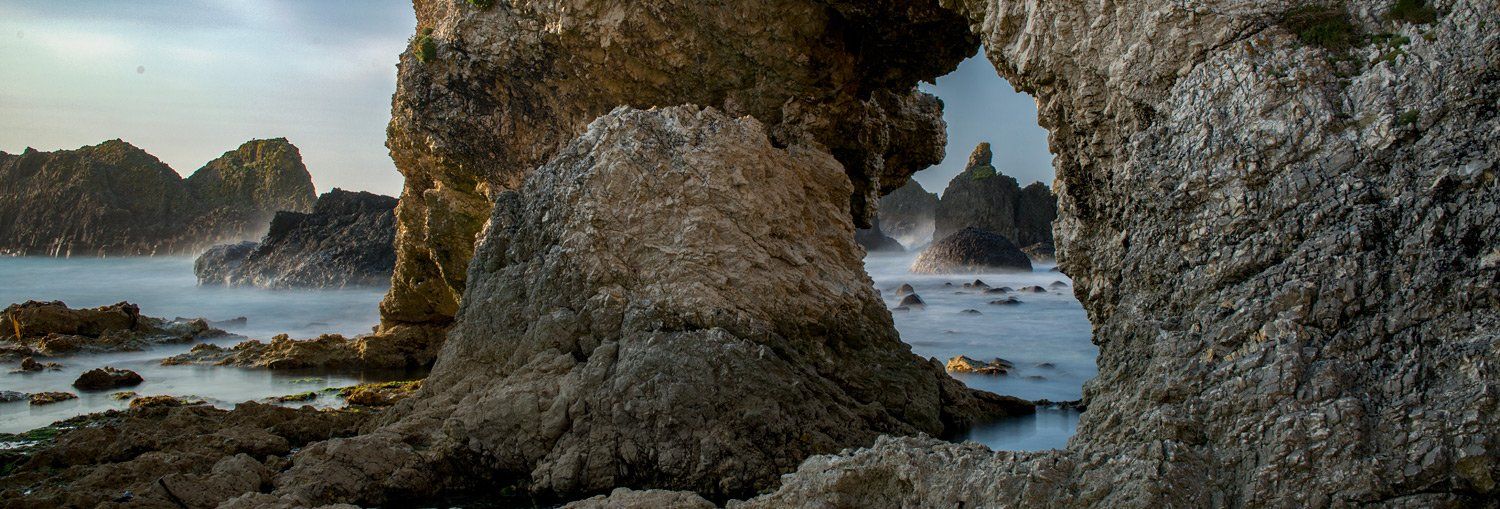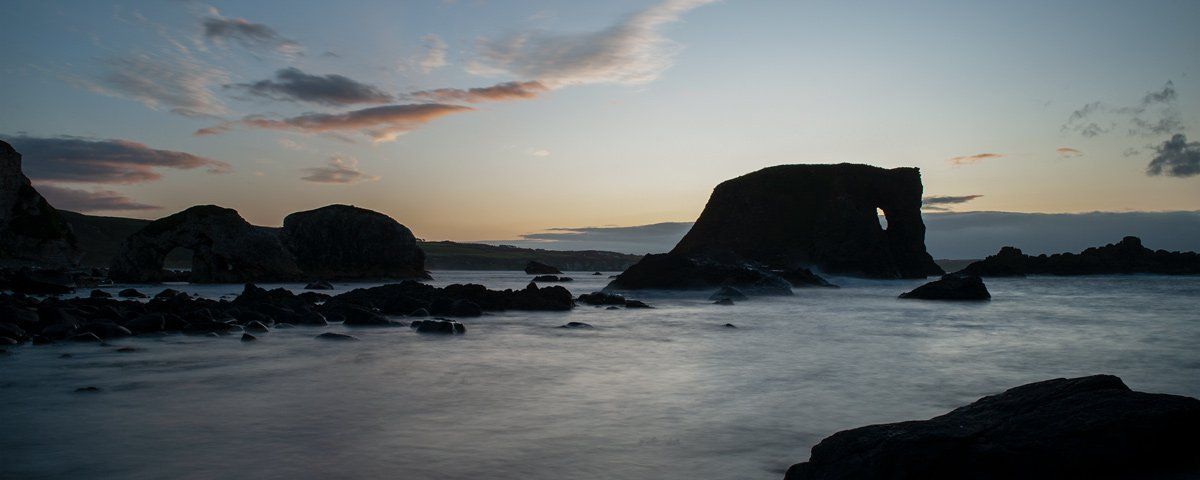The walk from Ballintoy to White Park Bay is well worth taking and follows an ancient pathway trodden since man first set foot here some 9,000 years ago. The bay in geological terms is known as a 'raised beach', the ocean would have once washed into the curved cliff face and both Portbraddon and Ballintoy harbour would have been submerged at this time. As the ice age came to a close the landmass gradually rose leaving us with this exceptional bay. The ancient dune system is rich in flora and fauna, it also contains several carbon-dated Neolithic sites where arrowheads are occasionally found by the observant walker.
Along the shoreline, if your lucky, you can still find the odd fossilized ammonite or brachiopod washed out of the layer of Jurassic clay which underlies the beach area. In the dune system, there is an ancient mound known as a Tumulus which may have been a burial site, another word for Tumulus would be Si, in Irish mythology the fairies are said to have been the people of the Si. One prominent volcanic stack is aptly named the 'Elephant Rock', as a young boy I was told by an uncle that it was an elephant which had the misfortune to be caught as it tried to flee from an erupting volcano - it certainly fired my imagination to the wonderful shapes and rock outcrops that are plentiful around the north Antrim coast.
Close to the elephant rock, you will find a nicely eroded limestone arch which at high tide is surrounded by water, a cave overlooking these rocks was excavated by archaeologists and revealed Iron Age artefacts. The whole area round to Ballintoy has an amazing number of basalt islet and is unique, it is also one of the finest locations to view the power of Atlantic storms as they pound into these natural defences. The waters around Ballintoy can be very treacherous and over the centuries they have caused many tragedies, it is well known for picking up swell waves and for having strong tidal currents and rips between the islands - the blackness of the basalt islets reveal the zones of constant wave action and even the tallest stack will get washed by winter storms.
Two natural arches exist close to either end of Whitepark Bay - Dunnaglea at the Ballintoy and Gid Point (round from Portbraddon), both are natural basalt arches. The late Bertie McKay of Portbraddon told me he used to see an elderly gentleman taking a folding chair down to the beach on sunny evenings to view the setting sun through the arch of Gid Point. There is certainly something unique about this part of the north coast which goes beyond the natural beauty - perhaps it is the affinity inside us or knowing that man first set foot here, or that we can still walk along a shoreline landscape that has remained virtually unchanged since that time. One thing is sure - we are privileged to have such a magical place to enjoy.




